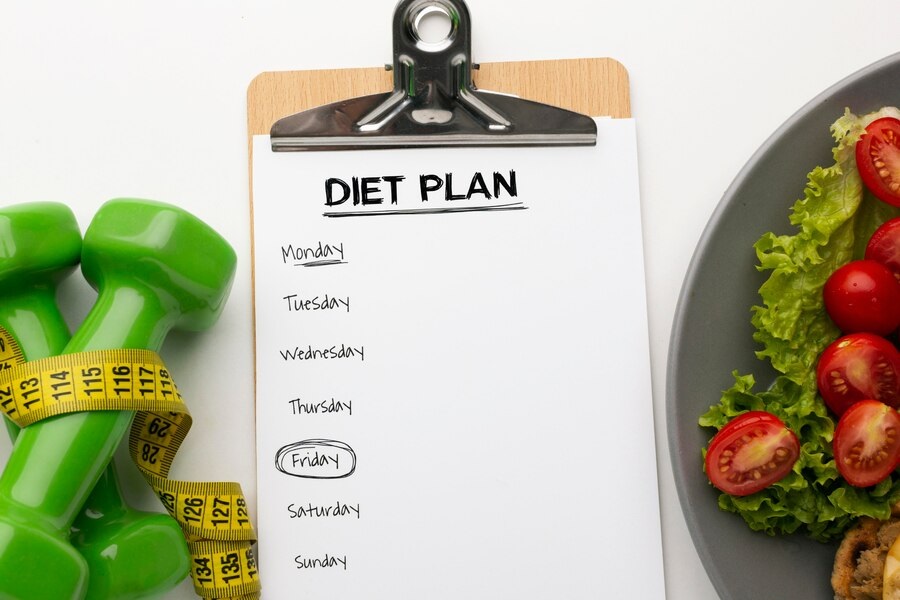Introduction to Diet Plan for Weight Loss
Achieving a healthy weight is a goal many people strive for, but it requires careful planning and commitment. A diet plan for weight loss can help you manage calorie intake, ensure proper nutrition, and maintain a sustainable lifestyle. In this guide, we’ll delve into effective strategies, balanced meal plans, and actionable tips to help you shed pounds healthily and sustainably.
Understanding the Basics of Weight Loss
How Weight Loss Works
Weight loss occurs when you burn more calories than you consume. This involves:
- Caloric Deficit: Consuming fewer calories than your body burns.
- Balanced Nutrition: Prioritizing nutrient-dense foods over empty calories.
- Physical Activity: Increasing calorie expenditure through exercise.
Importance of a Customized Diet Plan
No two bodies are the same. A successful diet plan for weight loss should consider:
- Your Metabolism: The rate at which your body burns calories.
- Health Conditions: Issues like diabetes or thyroid disorders.
- Lifestyle: Your daily routines and activity levels.
Components of an Effective Diet Plan for Weight Loss

1. Setting Realistic Goals
- Aim for a 1-2 pound weight loss per week.
- Focus on long-term sustainability rather than quick fixes.
2. Calorie Management
- Determine your daily caloric needs using online calculators.
- Reduce your calorie intake by 500-1000 calories per day for steady weight loss.
3. Balanced Macronutrients
- Proteins: Essential for muscle repair and satiety. Include lean meats, fish, tofu, and legumes.
- Carbohydrates: Choose complex carbs like whole grains and vegetables.
- Fats: Opt for healthy fats from nuts, seeds, and olive oil.
4. Portion Control
- Use smaller plates to control portion sizes.
- Practice mindful eating by savoring each bite and avoiding distractions.
Sample Diet Plan for Weight Loss
Morning Routine
- Hydration: Start with a glass of warm lemon water.
- Breakfast: A bowl of oatmeal topped with fruits and a sprinkle of nuts.
Mid-Morning Snack
- A handful of almonds or a piece of fruit.
Lunch
- Grilled chicken or tofu with a quinoa salad and steamed vegetables.
- Include a small serving of healthy fats like avocado.
Afternoon Snack
- Greek yogurt with a teaspoon of honey or chia seeds.
Dinner
- Baked salmon with roasted sweet potatoes and sautéed spinach.
Evening Snack
- Herbal tea and a few pieces of dark chocolate.
Foods to Include in Your Diet Plan for Weight Loss
High-Fiber Foods
- Fruits like apples, berries, and oranges.
- Vegetables like broccoli, spinach, and kale.
Lean Proteins
- Chicken breast, turkey, and egg whites.
- Plant-based options like lentils and chickpeas.
Whole Grains
- Brown rice, quinoa, and whole-grain bread.
Healthy Fats
- Avocados, nuts, and olive oil.
Low-Calorie Beverages
- Green tea, black coffee, and infused water.
Foods to Avoid
- Sugary Drinks: Sodas, sweetened teas, and energy drinks.
- Refined Carbs: White bread, pastries, and sugary cereals.
- Fried Foods: High in calories and unhealthy fats.
- Processed Snacks: Chips, candy, and instant noodles.
Tips for Success
Meal Prepping
- Plan and prepare meals in advance to avoid impulsive eating.
Stay Hydrated
- Drink at least 8-10 glasses of water daily to boost metabolism and reduce hunger.
Exercise Regularly
- Combine cardio with strength training to enhance fat loss and preserve muscle mass.
Get Enough Sleep
- Poor sleep disrupts hormones that regulate appetite, leading to weight gain.
Track Your Progress
- Use apps or journals to monitor your food intake and activity levels.
Popular Diet Plans for Weight Loss
1. Keto Diet
- High-fat, low-carb approach to induce ketosis.
- Effective for rapid weight loss but requires strict adherence.
2. Mediterranean Diet
- Emphasizes whole foods like fish, olive oil, and vegetables.
- Promotes heart health and sustainable weight loss.
3. Intermittent Fasting
- Alternates between eating and fasting periods.
- Helps reduce calorie intake without counting every meal.
4. Vegan Diet
- Plant-based diet eliminating animal products.
- Low in calories and high in fiber, aiding weight loss.
Common Mistakes to Avoid
Skipping Meals
- Leads to overeating later and slows metabolism.
Overeating Healthy Foods
- Even nutrient-dense foods can hinder weight loss if consumed in large quantities.
Relying on Supplements
- Focus on real foods rather than pills and powders.
Unrealistic Expectations
- Quick results often lead to rebound weight gain. Aim for gradual progress.
Frequently Asked Questions (FAQs)
How Many Calories Should I Consume?
This depends on your age, gender, and activity level. Use a BMR calculator to estimate.
Can I Have Cheat Meals?
Yes, occasional indulgences can keep you motivated. Just don’t overdo it.
What’s the Best Time to Eat?
- Breakfast: Within an hour of waking up.
- Dinner: At least 2-3 hours before bedtime.
Do I Need to Exercise?
Yes, combining a diet plan for weight loss with regular exercise yields the best results.
Conclusion
A well-structured diet plan for weight loss is the cornerstone of achieving and maintaining a healthy weight. Focus on balanced nutrition, portion control, and a sustainable lifestyle. Remember, consistency and patience are key to long-term success. Start today, and take the first step toward a healthier, happier you!




